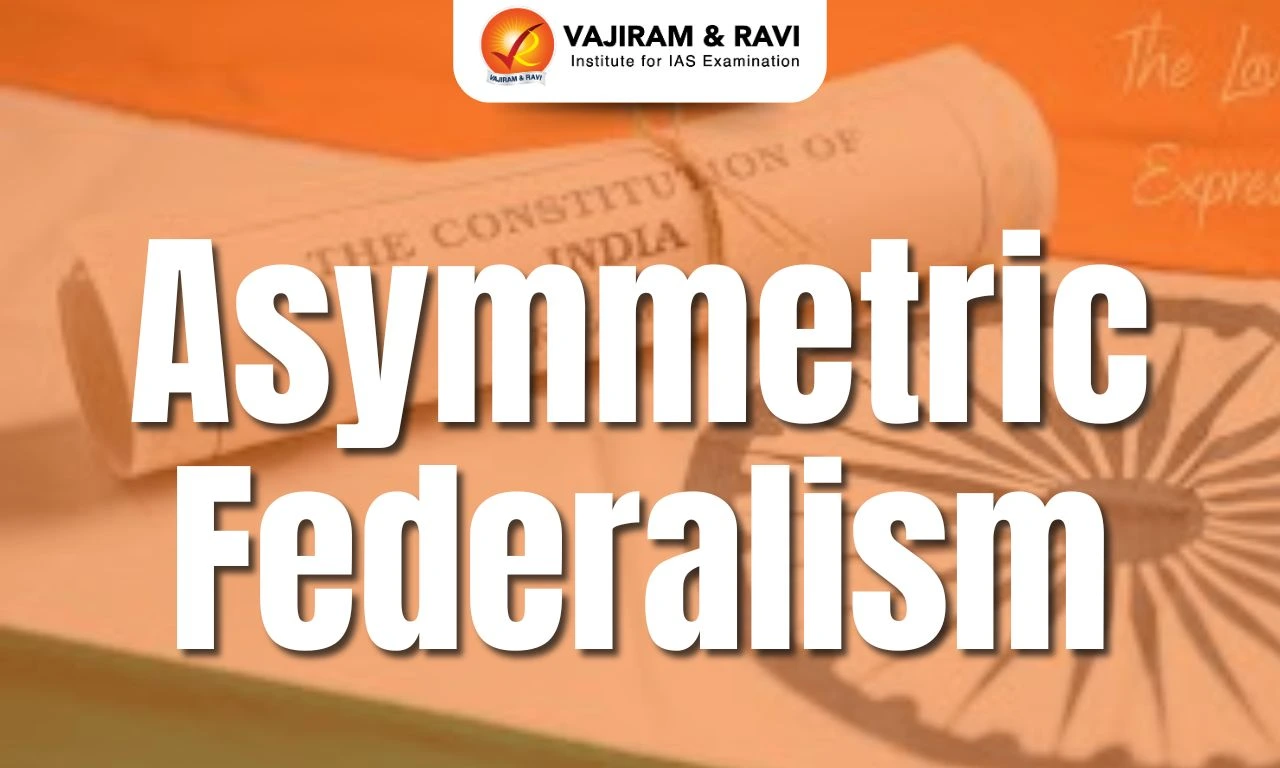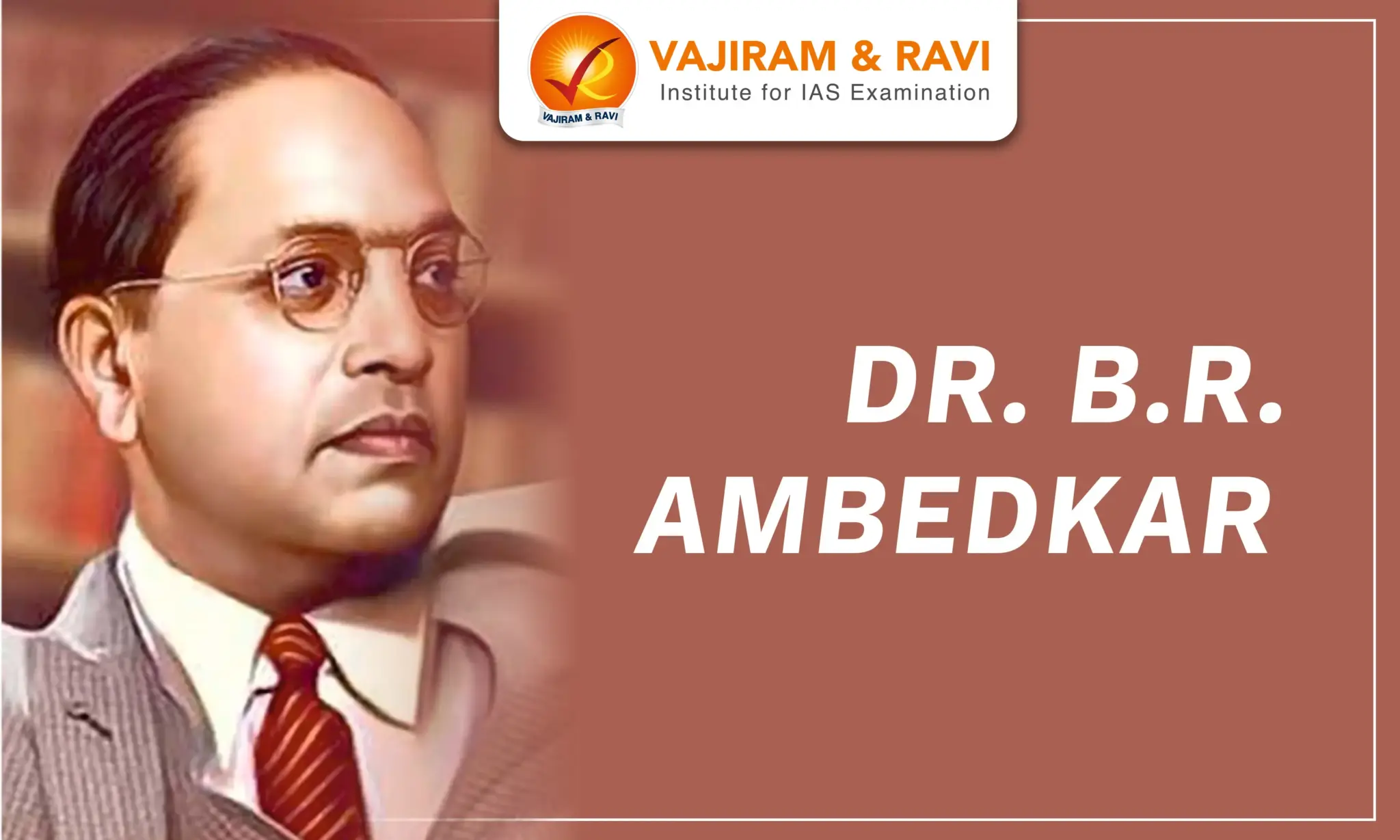Asymmetric federalism is based on unequal powers and relationships in political, administrative, and fiscal arrangement spheres between the federal units constituting a federation.
- Asymmetry in the arrangements of a federation can be viewed in both vertical (between the centre and states) and horizontal (among the states) senses.
- Asymmetric arrangements need not necessarily be the outcome of constitutional arrangements. They can also result from the way in which administrative, political, and fiscal systems are implemented in a federation.
- India's founding fathers recognized the need for a salad bowl approach to governance which recognizes the distinctive cultural differences in the country and permits self-rule within the scheme of a shared rule.
Significance of Asymmetric Federalism in the Indian Political Setup
An intrinsic characteristic of Indian federalism is its asymmetry. The governance of India is based on a tiered federal system, wherein the Constitution assigns the subjects on which each tier of government exercises powers. India needs asymmetric federalism because of:
- Plurality of Indian society: India has a diverse and pluralistic society with multiple religions and languages, and asymmetrical federalism is a necessary framework for a multicultural and multinational country such as India.
- Accommodation and integration: Asymmetrical federalism is a system that allows for self-rule within the framework of shared rule, and it follows the principle of weighted and differentiated equality.
- Protection of minorities: By giving more power and autonomy to regions where certain minority groups are concentrated, asymmetrical federalism helps ensure that these groups are not marginalized.
- State-specific issues: By giving more power to states, asymmetrical federalism can help ensure that the state-specific issues are given the attention and resources they need to be effectively addressed.
- Strengthening federalism: Asymmetric federalism strengthens federalism by ensuring a balance of power by ensuring decentralization of power and decision-making as per requirements of the federal units.
Asymmetric Features of Indian Federalism
Constitutional Provisions
- Vertical asymmetry
- The Indian Constitution provided for a federal setup with a strong centre. Some of these features include-
- Article 3- Centre can unilaterally alter the state names and boundaries.
- Article 352 & 356- Provisions related to imposition of National Emergency and President’s rule.
- Article 248- Residuary powers of legislation rests with the parliament.
Horizontal asymmetry
- Schedule 4: The states have unequal representation in the Rajya Sabha. Uttar Pradesh has 31 seats while Arunachal Pradesh has only 1 seat in the council of states.
- Part VIII: Part VIII of the Indian constitution has provisions related to the Union territories (UTs) whose federal arrangements are different when compared to the states.
- Schedule 5: The Fifth Schedule of the Constitution deals with the administration and control of Scheduled Areas as well as of Scheduled Tribes residing in any State other than the States of Assam, Meghalaya, Tripura and Mizoram.
- Schedule 6: The Sixth Schedule to the Constitution contains provisions for the administration of tribal areas in Assam, Meghalaya, Tripura and Mizoram. These create autonomous districts and autonomous regions.
- Article 371 & others: Ranging from Article 371 A to Article 371J, this Article gives special provisions for the states of Maharashtra, Gujarat, Nagaland, etc.
Fiscal Asymmetry
- Finance Commission
- The Finance Commission is a constitutional body formed by the President of India to give suggestions on centre-state financial relations.
- Share of states in central taxes( Vertical asymmetry): As per the recommendations of the 15th Finance Commission, The share of states in the central taxes for the 2021-26 period is recommended to be 41%.
- Devolution among states( Horizontal asymmetry): Criteria like Income distance, Demographic performance, Forest and Ecology, etc are used for devolution among the states.
- Grants: Over the 2021-26 period, the grants like Revenue deficit grants, Sector-specific grants, grants to local bodies are provided from the centre’s resources to the selected states.
- Centrally sponsored schemes
- Centrally Sponsored Schemes (CSS) are those schemes which are implemented by the state government but sponsored by the central government with a defined shareholding.
- The funding is borne by the states in the ratio of 60:40 or 90:10.
- For special category status states, the Centre pays 90% of the funds required in a centrally-sponsored scheme as against 60 per cent in case of normal category states, while the remaining funds are provided by the state governments.
What are the recent developments pertaining to Article 370?
Article 370 of the Indian Constitution was a temporary provision that granted a special status to the state of Jammu and Kashmir (J&K) in India.
Evolution and Provisions
- According to Instrument of Accession of 1947, signed by the Maharaja of Kashmir, three areas with respect to the state of Jammu and Kashmir were ceded to the Indian government: foreign affairs, defense, and communications.
- The interim Prime minister of Jammu and Kashmir and three other colleagues joined the Indian Constituent Assembly and negotiated the special status of J&K, leading to the adoption of Article 370.
- Under Article 370, the President can decide provisions of the Indian Constitution that would apply to Jammu and Kashmir with or without modification.
- Also, the Indian Parliament needs the Jammu & Kashmir government's approval for applying laws in the state except in cases of defense, foreign affairs, finance, and communications.
- Article 35A, which defined ‘permanent residents’ and provided special rights and privileges to them, was incorporated into the Constitution in 1954 by Presidential order under Article 370.
Abrogation of Article 370
In 2019, the special status given to Jammu & Kashmir under Article 370 and 35 A was removed.
- Accordingly, the Constitution (Application to Jammu & Kashmir) Order, 2019, was issued by the President to supersede the 1954 order related to Article 370.
- Also, Jammu and Kashmir (Reorganization) Act 2019 was enacted, making Jammu & Kashmir a Union territory with a Legislative Assembly, along with Union Territory status to Ladakh without a Legislative Assembly.
- Now, the Union Territory of Ladakh is demanding that the region be included in the Sixth Schedule of the Constitution to safeguard the land, employment, and cultural identity of the local population.
What are the special provisions provided to states under Article 371?
The ‘special provisions’ applicable to some other States under Article 371 are mainly in the form of empowering the Governors to discharge some special responsibilities.
| Article | Provision |
| Article 371 |
|
| Article 371A |
|
| Article 371B | Special provision for Assam under which a committee of legislators from the tribal areas was formed to look after their interests. |
| Article 371C |
|
| Article 371D | The President can pass an order to provide equitable opportunities and facilities to people belonging to different parts of Andhra Pradesh and Telangana in public employment and education. |
| Article 371F | To grant protection to existing laws in Sikkim so that they are not declared unconstitutional after Sikkim’s integration with India. |
| Article 371G | Special provisions to preserve the religious and social practices of Mizos in Mizoram and their customary law and procedure and administration of criminal and civil justice, besides ownership of land. |
Last updated on November, 2025
→ Check out the latest UPSC Syllabus 2026 here.
→ Join Vajiram & Ravi’s Interview Guidance Programme for expert help to crack your final UPSC stage.
→ UPSC Mains Result 2025 is now out.
→ UPSC Notification 2026 is scheduled to be released on January 14, 2026.
→ UPSC Calendar 2026 is released on 15th May, 2025.
→ The UPSC Vacancy 2025 were released 1129, out of which 979 were for UPSC CSE and remaining 150 are for UPSC IFoS.
→ UPSC Prelims 2026 will be conducted on 24th May, 2026 & UPSC Mains 2026 will be conducted on 21st August 2026.
→ The UPSC Selection Process is of 3 stages-Prelims, Mains and Interview.
→ UPSC Result 2024 is released with latest UPSC Marksheet 2024. Check Now!
→ UPSC Prelims Result 2025 is out now for the CSE held on 25 May 2025.
→ UPSC Toppers List 2024 is released now. Shakti Dubey is UPSC AIR 1 2024 Topper.
→ UPSC Prelims Question Paper 2025 and Unofficial Prelims Answer Key 2025 are available now.
→ UPSC Mains Question Paper 2025 is out for Essay, GS 1, 2, 3 & GS 4.
→ UPSC Mains Indian Language Question Paper 2025 is now out.
→ UPSC Mains Optional Question Paper 2025 is now out.
→ Also check Best IAS Coaching in Delhi
Tags: asymmetric federalism quest

















